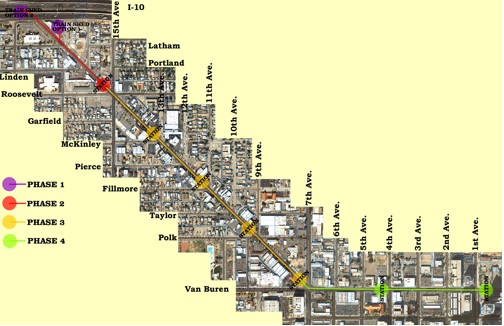Last week, I noted that we are in a buyer’s market. I know this because of the The Cromford Report –outstanding data analysis group here in Phoenix. They’re kind of like the Case-Schiller Index –except for Maricopa County, and, you know, ACCURATE!
Today, I want to give a little refresher for those who may not be familiar with The Cromford Report and explain this index, which is specific for The Cromford Report. The Cromford Report was started by Michael Orr, who’s a mathematician from Oxford, and the director for Real Estate, Theory and Practice at ASU.
This index is an algorithm that Orr put together to let us know whether or not we are in a seller’s market or a buyer’s market compared to the last balanced market, which was in 2001-2002.
This slide shows that we are in a buyer’s market.
Anytime this yellow indicator is above 100, it’s a seller’s market or a seller’s advantage, where demand is outstripping supply. When it’s below 100, it’s a buyer’s market.
That means there are more properties than buyers out there to absorb them. When we’re right in this little yellow area, that’s what we consider balance.
The reason why this indicator is important is it’s the very first thing to move when there’s a shift. The very last thing to respond is sale price. So when this moves, you get about a three month advance notice of a shift in price.
See in 2005-2006 how that index dropped dramatically below that yellow line –that was LONG BEFORE we saw prices start to drop. See the image below, for an example of that lag in prices and perception.
As long as this is above 100, pressure is on prices to go up. As long as it is below 100, pressure is on prices to go down. When it’s at balance, prices will stabilize.
When this indicator shifted, you had one to six months to get out of your property while the prices were still going up. When prices are trailing the indicator, it’s lagging. Once it crossed over the yellow line, it took six more months for our prices to peak.
So in Phoenix, our prices, our raw sale price, didn’t peak until 2006. We actually a year and a half advance notice.
That’s the power of The Cromford Report.
Next week: You’ve probably seen all of the price appreciation and all the fun that comes along with seller’s market all within the last two and a half years, but this shift is significant because it’s not a crash. That line dropping below the yellow line in 2005. That’s a crash. Where we are right now, is not a crash. It’s an adjustment to the market, and we might see this bounce around this line a little bit as we find our new normal. But next week, I’m going to show with the evidence in The Cromford Report where we are and why.
If you are buying or selling you need to pay attention to see where things will go. Got questions? Give me a call me at 602-456-9388.

























